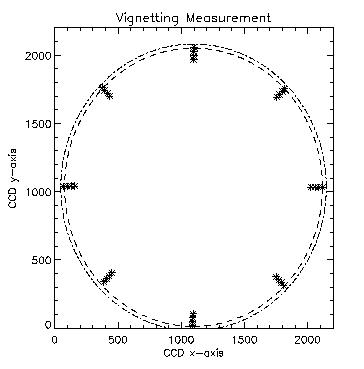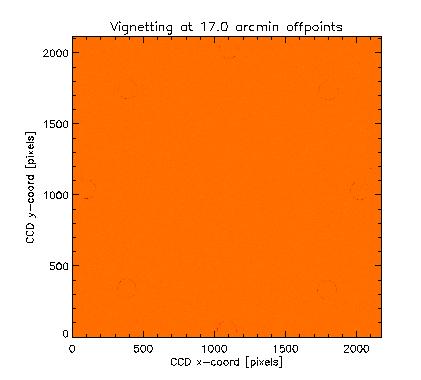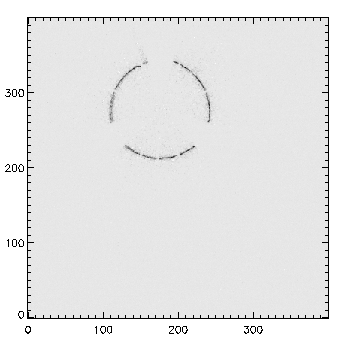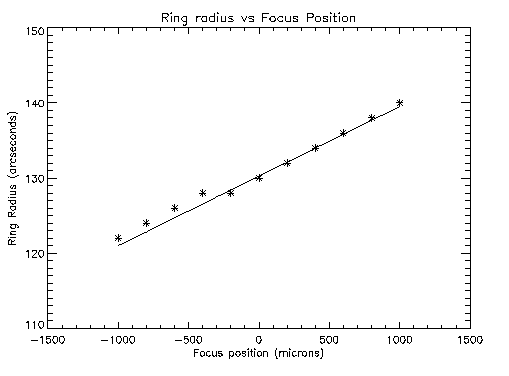Harvard-Smithsonian Center for Astrophysics
XRT Testing Day 20050614
Test Conductor E. DeLuca
Shift Scientists J. Cirtain & M. Weber
Flight Configuration Focus Verification
The finite source spacer was removed from the telescope and the instrument set in its flight configuration. In this setup, the telscope is out of focus, and will not form a spot on the CCD but instead produce an image of a ring. The radius of the ring at the different focus positions is an approximate measure of the telescope focus position. Consequently, images of rings at numerous different focus step positions were produced. The center of the ring was located and the radius of the ring determined by fitting a circle to the ring image and determining the distance to the peak of the gaussian fit to the ring's cross-section. The radii at the different focus positions were then plotted as a function of focus position. This plot is provided below along with one of the ring images.
Flight Configuration Vignetting
A series of ring images were taken at a variety of offpoints (16.0, 16.5, 17.0, 17.5 arcmin, eight 45-deg angles) to evaluate the vignetting function of the instrument. The first plot below indicates the locations of the ring centers on the CCD. Circles with radius 17.0 and 17.5 arcmin are overplotted.

The figure below is the superposition of the eight ring images at 17.0 arcmin offpoints. More than 50% of each ring can be seen. The conclusion is that the XRT field-of-view is at least 17.0 arcmin in radius. (The rings appear faint in this image, despite some time spent working with the contrast. More image manipulation after the End-to-End test will bring out the rings better.)



VLI Ring
Some images were taken using the visible light "pen" lamp. The purpose was to see if the contributions from the X-Ray Optic (XRO) and the Visible Light Instrument (VLI) could be separated in the flight configuration. An image was taken with both the VLI shutter open and closed. These were subtracted leaving only the contribution from the VLI. This was not found to be particularly useful, as the image centroid filled a large part of the CCD area.Ring Scattering in Flight Configuration
Images of long integration time were collected at one focus step position. The hope here is some information about the scattering can be derived from these data, and initial investigation do show a nominal signal at the center of the ring image, a result of scattering. No analysis products have yet been completed for these observations.Testing concluded on Tuesday 14-June-2005. It has been deemed an absolute